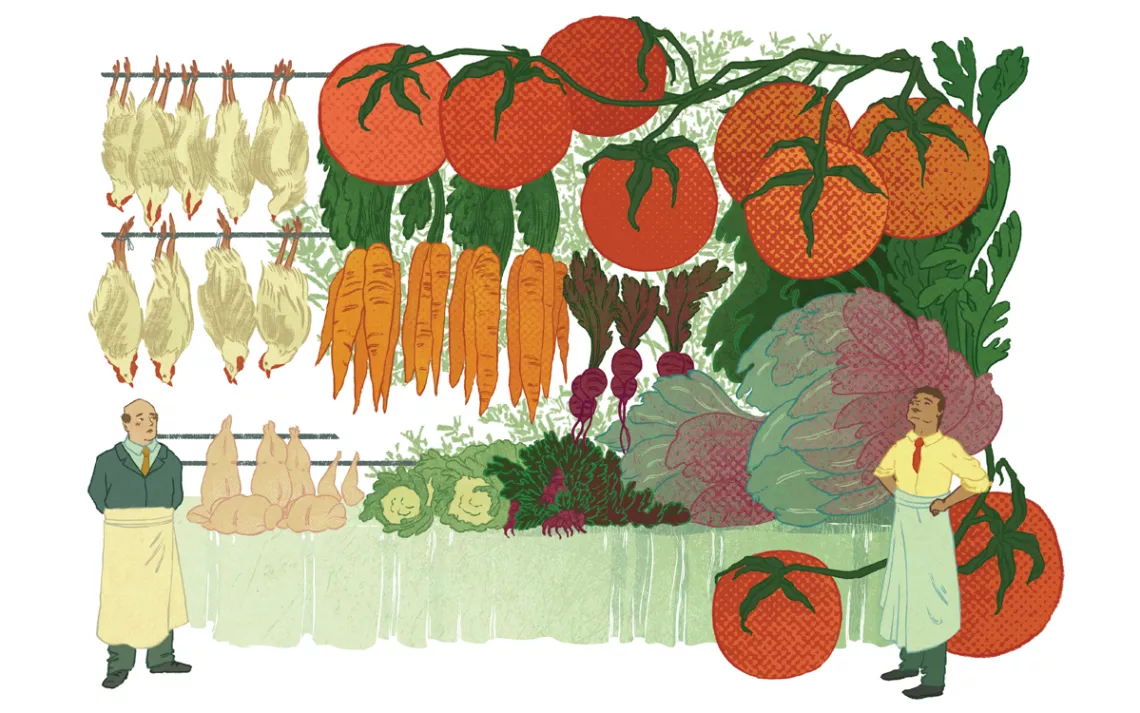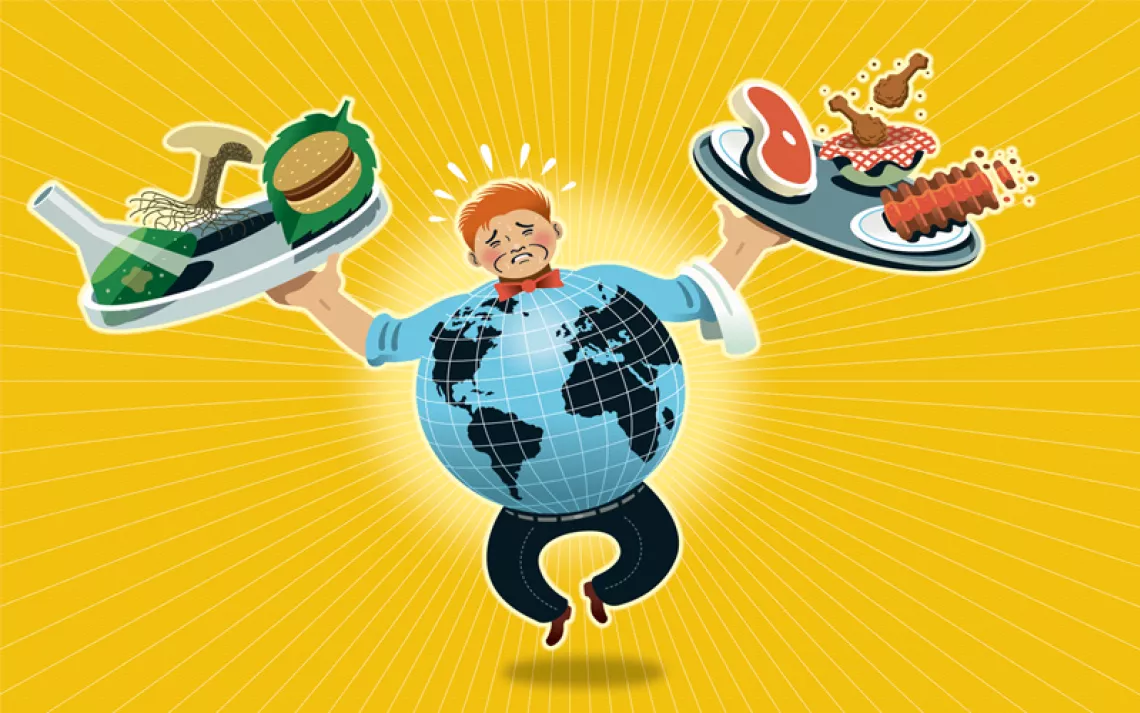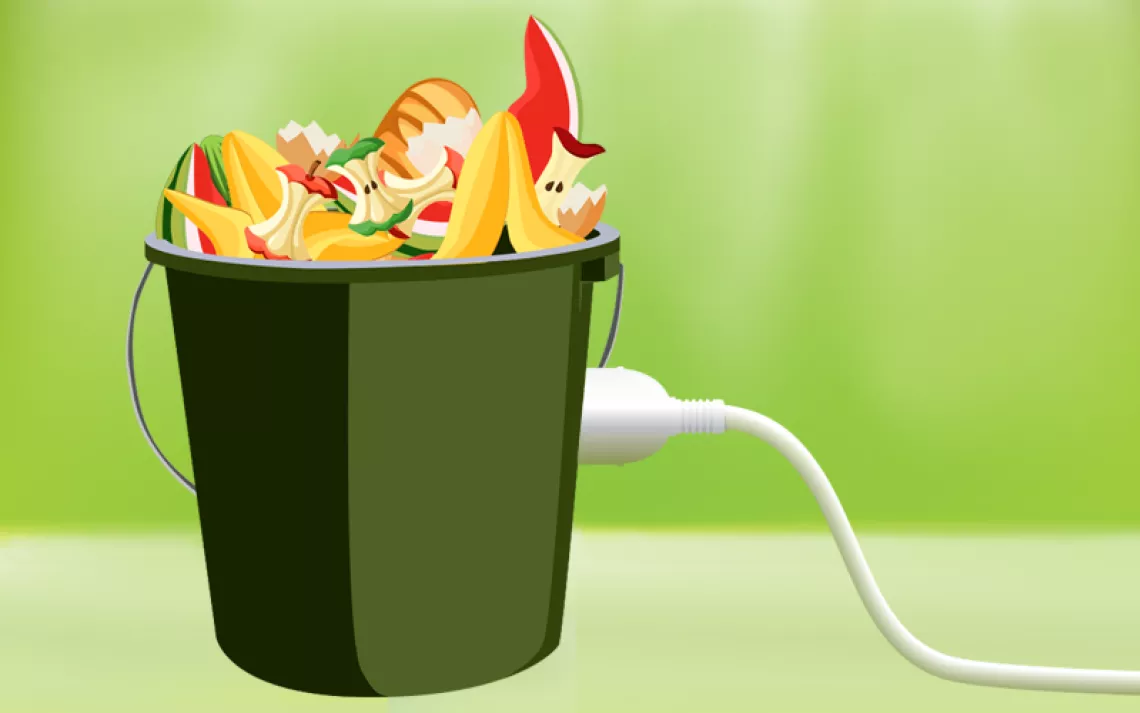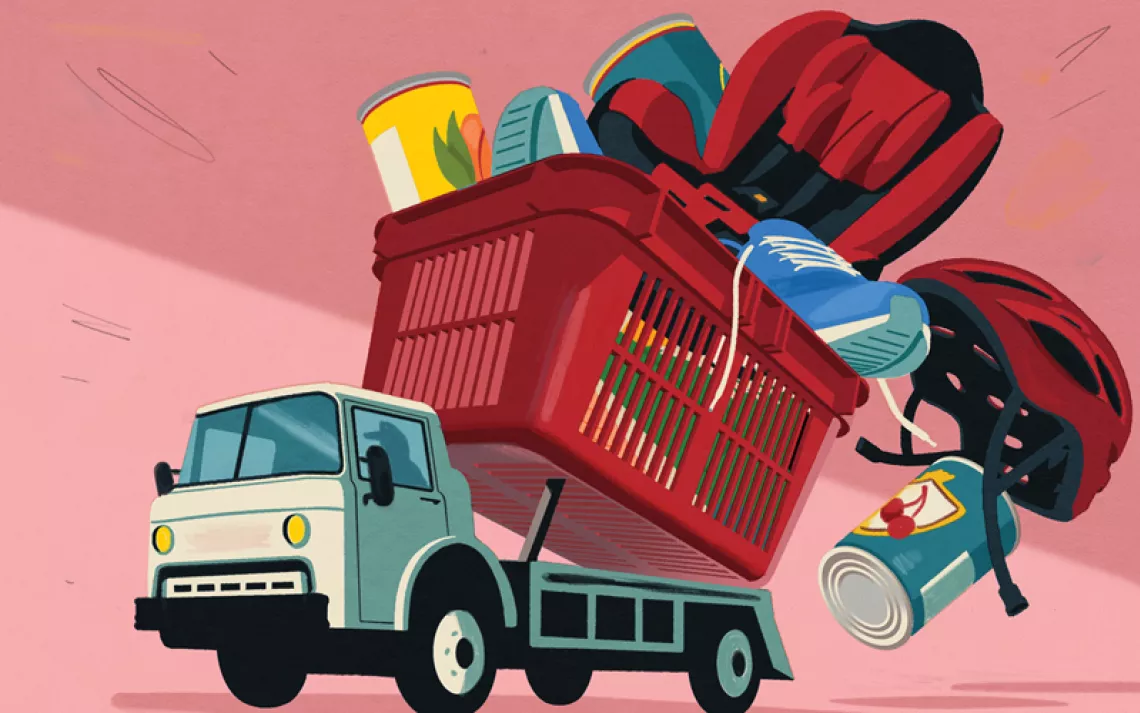Here's How to Choose Climate-Friendly Food at the Grocery Store
A guide to eating in a warming world that goes beyond "meatless Monday"

Even if we consider ourselves environmentally minded, lowering carbon emissions by swapping animal products for a plant-based diet remains off the table for a lot of people.
"In many cultures, there are strongly ingrained beliefs that help people rationalize their meat consumption," said Matthew Ruby, a senior lecturer in psychology at La Trobe University in Australia who studies why people make certain food choices. The top justifications for consuming animal products are the "4Ns": believing they're nice to eat, necessary for health, and normal and natural dietary choices.
But the 4Ns don't necessarily hold up to scrutiny: Plant-based foods can be just as tasty and nutritious. And humans are continuously adapting to their environments—it's possible for us to gastronomically adapt to a warming world too. Here's how you can start making choices with our global food system and climate change in mind.
Try Edamame Monday or Tempeh Tuesday
The most well-known way to become a flexible eater is by adopting "meatless Monday," the practice of avoiding all meat on the first day of the workweek. It's a low-commitment entry point with a potentially high payoff: About a third of meatless Monday participants become fully vegetarian after five years. It might even be cheaper. Research suggests that a vegetarian diet can reduce food spending by as much as 30 percent.
To add a pound of body weight, livestock need to eat anywhere from two to 50 times as many pounds of feed, often containing commodity crops such as corn or soybeans. That means every calorie from meat amplifies emissions across the farming system. It's far more efficient for us to eat plants directly than to eat the animals those plants feed.
While giving up meat once a week won't stop this system in its tracks, voting with your dollars can work in the long term to prevent a lot of pollution—and already is. Two-thirds of consumers plan to spend more money on plant-based products in the future, and large meat conglomerates such as Tyson Foods and Smithfield Foods are bending to market pressures, rolling out plant-based meat alternatives while closing some of their large meat-processing plants.
If you typically eat meat two times a day, replacing it with meatless options such as tofu, legumes, or a veggie burger for one year could prevent the emissions equivalent of driving a gas-powered car almost 700 miles.
A vegan meal starring legumes is the most climate-friendly way to eat, said Marco Springmann, who studies the emissions impact of the global food system at the University of Oxford. Bonus: Because legumes naturally draw nitrogen from the air into soil, growing them requires less fertilizer and emits fewer greenhouse gases than other crops.
Don't Ruminate
If giving up meat at any level sounds daunting, consider reducing the amount of food products you eat from ruminant animals. Cows, bison, sheep, and goats all digest and ferment their food with four-compartment stomachs in a process called rumination. In cows, this fermentation creates up to 50 quarts of planet-warming gas per hour, which cows release through belching.
It's no joke: One-third of global methane emissions come from cow belches, according to the EPA. That's partly why beef is the single most harmful food to the climate, and it's also why the emissions burden of ruminants is 10 times higher than that of other animals. Consuming 50 grams of protein from eating pork instead of beef means you prevent the emissions equivalent of burning more than 15 pounds of coal.
Eating cheese can be worse for the climate than eating some meats, so leaving cheese behind is second only to forgoing beef in its positive climate impact. Cheese production starts with a ruminant animal and requires a lot of milk. Making two pounds of cheese emits two times more planet-warming gases than processing two pounds of poultry does. "You can be a fairly unsustainable vegetarian if you eat lots of dairy," Springmann said.
Go Local or Eat Lentils?
It's tempting to think that locally raised meat options might prevent the worst of the emissions impact of meat and dairy production. After all, wouldn't it be better to buy a steak from down the road than a bean burger produced halfway across the country?
The production of animal-based foods results in so many climate-warming gases that it's hard to offset those climate impacts simply by buying meat and dairy sourced locally, according to Mengyu Li and David Raubenheimer, who study food-system emissions at the University of Sydney. They estimate that prioritizing local food has the potential to reduce emissions from one's diet by only 10 percent. "Localization alone seems to not be enough," Li said. "A shift toward plant-based foods is necessary and more important to ensure a low-emissions diet."
If you are trying to further reduce the carbon footprint of even your lowest-emissions ingredients, Raubenheimer said, "locally produced plant-based diets are the answer." Skipping produce that's traveled by long-distance air transport, such as fruits and vegetables that are nonseasonal or exotic to your locale, is the final frontier of sustainable eating.
Food-system innovations like giving cows methane-reducing feed supplements and planting cover crops do show some promise in reducing emissions from animal agriculture. But the potential reductions pale in comparison to the changes we can make together by simply eating fewer animal products.
"Do we all need to be vegan to save the climate? The answer is probably not," Springmann said. But if more people are flexible enough to start replacing meat and dairy, humanity will have a better chance of avoiding the worst of climate change's effects.
 The Magazine of The Sierra Club
The Magazine of The Sierra Club







